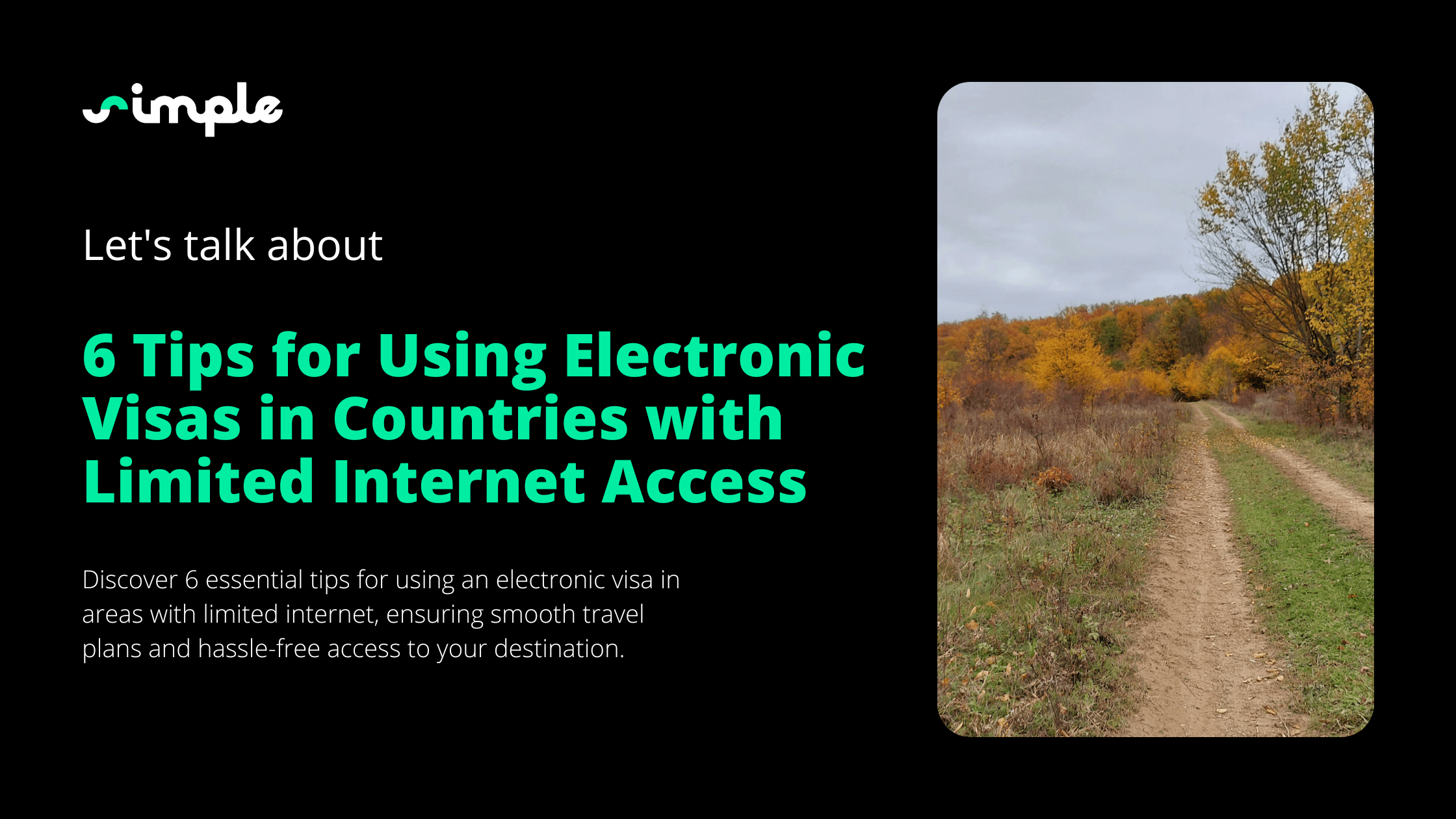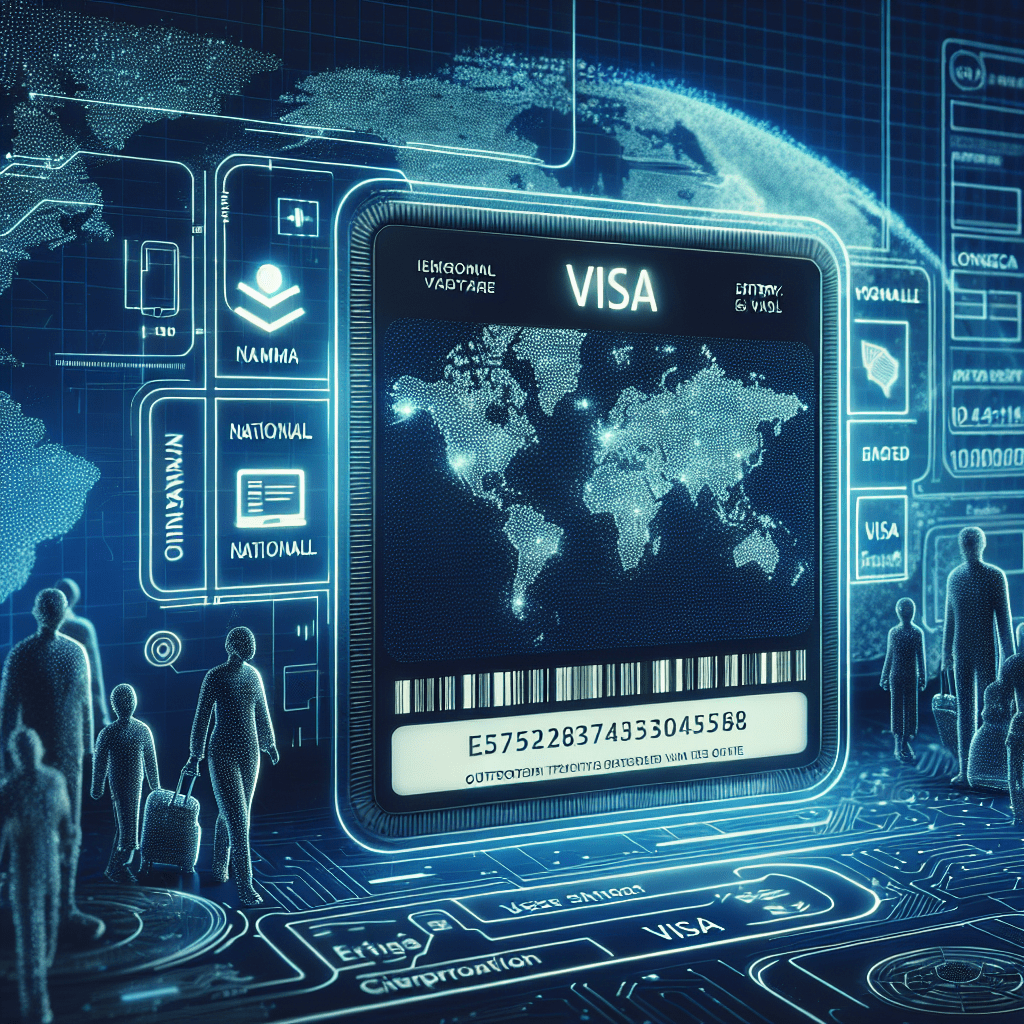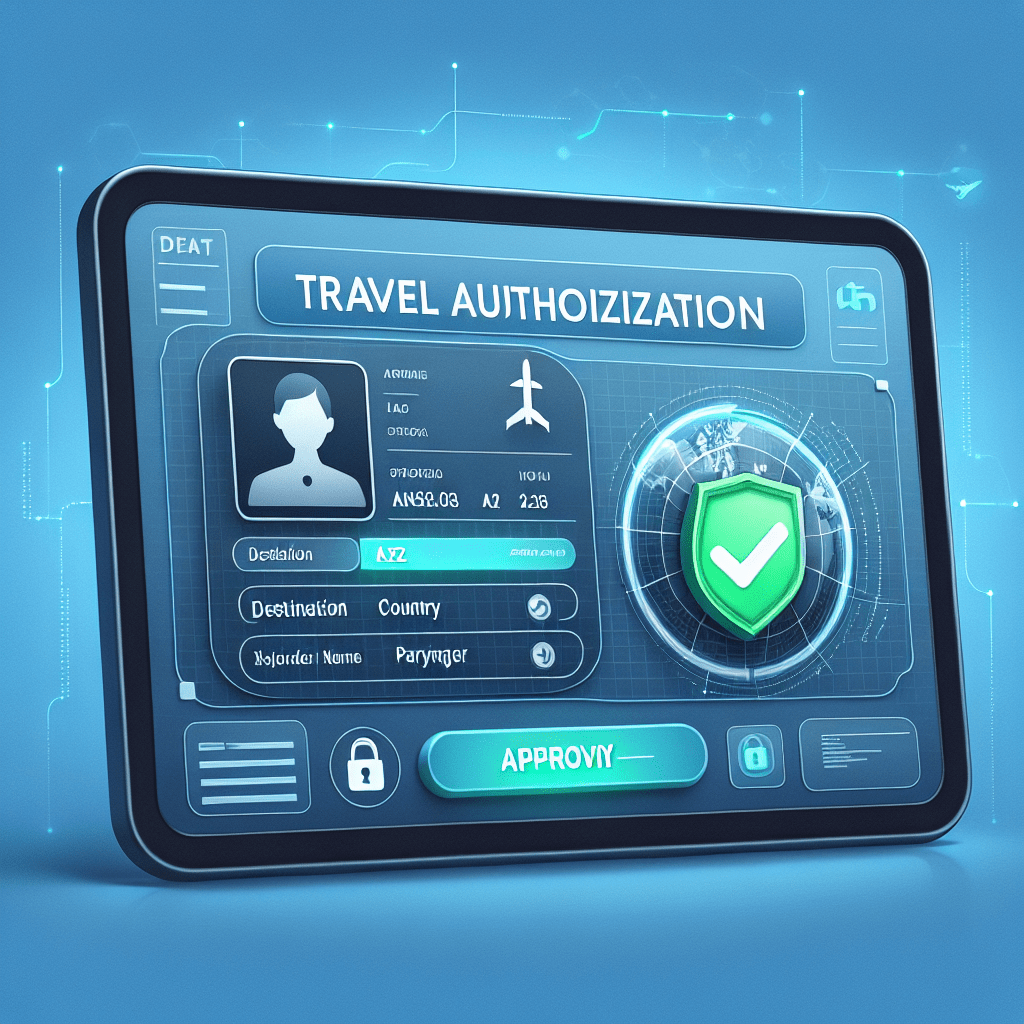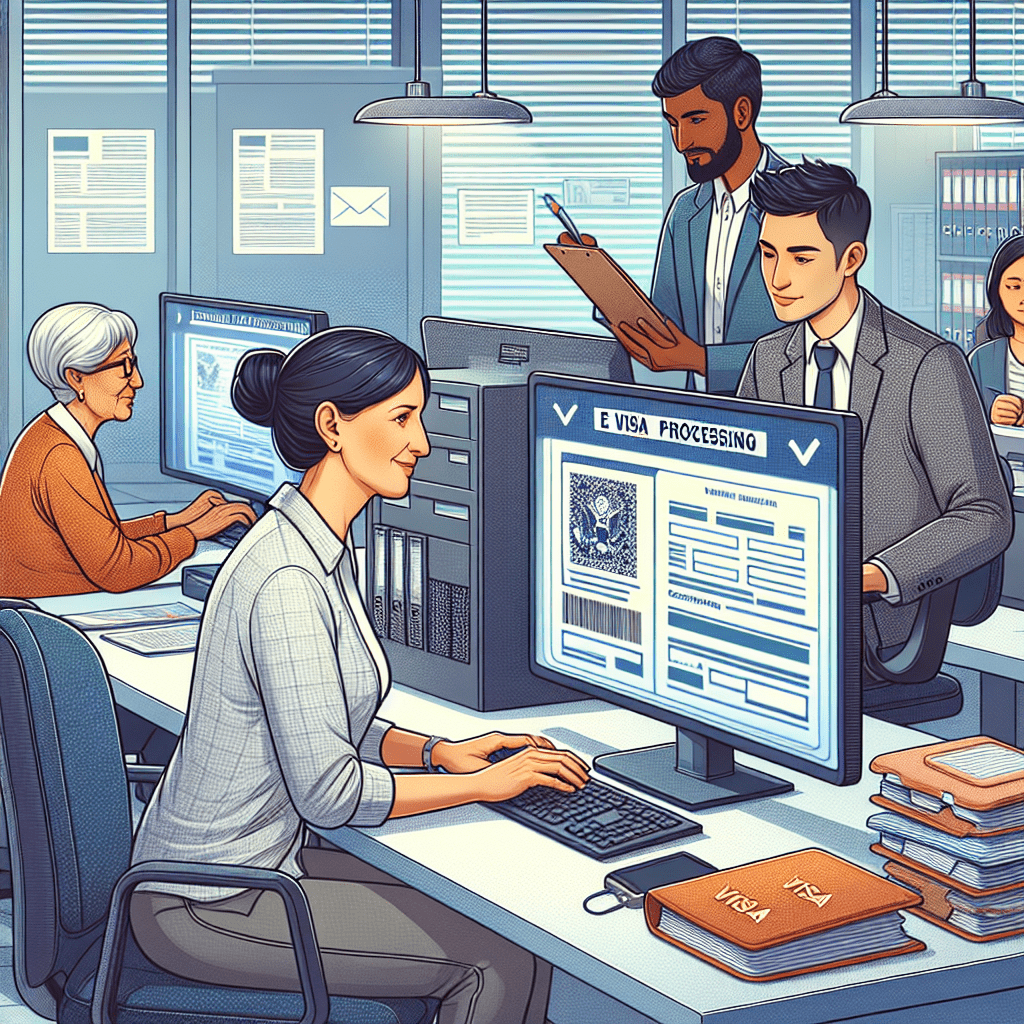6 Tips for Using Electronic Visas in Countries with Limited Internet Access

Electronic visas have revolutionized the way travelers gain entry into foreign countries, offering a streamlined and efficient alternative to traditional visa processes. As digital travel authorization becomes increasingly prevalent, understanding how to navigate electronic visa systems is essential for modern travelers. These online visa applications provide a convenient way to secure travel permits without the need for physical paperwork or in-person visits to embassies. However, for those venturing into regions with limited internet access, the process can present unique challenges.
In areas where internet connectivity is sparse or unreliable, obtaining an electronic visa can become a daunting task. Travelers may face difficulties in accessing online platforms, completing digital forms, or receiving timely updates on their visa status. These obstacles highlight the importance of preparation and strategic planning to ensure a smooth travel experience. By understanding the potential hurdles and adopting effective strategies, travelers can successfully navigate the complexities of electronic visa systems, even in regions with limited internet infrastructure.

Planning Ahead
Research Internet Accessibility in Your Destination Country
Before embarking on your journey, it is crucial to research the internet accessibility in your destination country. Understanding the digital landscape will help you anticipate potential challenges and plan accordingly. Start by identifying regions within the country that offer reliable internet access versus those with limited connectivity. Major cities and tourist hubs often have better infrastructure, while rural or remote areas may pose connectivity issues.
Utilize online forums, travel advisories, and social media groups to gather up-to-date information from fellow travelers and locals. These platforms can provide valuable insights into the current state of internet services, including any recent disruptions or improvements. Additionally, government websites and international travel resources may offer official guidance on internet accessibility and electronic visa requirements.
Being informed about the internet landscape will enable you to make strategic decisions, such as choosing accommodations with reliable Wi-Fi or planning your itinerary to include stops in areas with better connectivity. This proactive approach will help ensure that you can access your digital travel authorization and other essential online services when needed.
Save All Necessary Documents Offline
One of the most effective strategies for overcoming limited internet access is to save all necessary documents offline. Download and store your e-visa documents on multiple devices, such as smartphones, tablets, and laptops, to ensure redundancy. This way, if one device fails or is lost, you will still have access to your electronic travel permit on another device.
In addition to digital copies, it is wise to keep paper copies of your e-visa and other important travel documents. Printed copies serve as a reliable backup in case electronic devices malfunction or run out of battery. Ensure that these paper copies are stored securely and are easily accessible during your travels.
By having both digital and physical copies of your documents, you can navigate various situations with confidence, whether you need to present your e-visa at a border crossing or verify your travel authorization at a hotel check-in.
Understand the Local Requirements for Displaying Your E-Visa
Familiarizing yourself with the local requirements for displaying your e-visa is essential for a smooth travel experience. Different countries and regions may have varying expectations regarding the presentation of digital versus printed documents. In some cases, a digital version of your e-visa displayed on a smartphone or tablet may be sufficient, while in others, a printed copy may be mandatory.
Research the specific requirements of your destination country by consulting official government websites, contacting embassies, or seeking advice from experienced travelers. Understanding these requirements will help you prepare the appropriate documentation and avoid any potential issues at border crossings or checkpoints.
Additionally, be aware of local customs and practices regarding digital and paper documents. In some cultures, presenting a printed document may be considered more formal or respectful, while in others, digital documents may be readily accepted. By aligning your preparations with local expectations, you can ensure a seamless and respectful interaction with authorities and service providers.

Utilizing Technology Wisely
Make Use of Offline Apps and Tools
In regions with limited internet access, leveraging offline apps and tools can significantly enhance your travel experience. Many map and travel apps offer offline capabilities, allowing you to download maps and essential information before your journey. This ensures that you can navigate unfamiliar areas without relying on a constant internet connection. By having offline access to maps, you can confidently explore your destination and locate important sites, such as embassies or consulates, where you might need to present your electronic entry visa.
Translation apps with offline functionality are also invaluable tools for travelers. These apps can assist in communicating visa requirements and other essential information in the local language, helping to bridge any language barriers you may encounter. By preparing translations of key phrases related to your digital travel authorization, you can facilitate smoother interactions with local authorities and service providers.
By utilizing these offline resources, you can maintain a level of independence and self-sufficiency, even in areas where internet connectivity is sparse. This proactive approach ensures that you are well-equipped to handle any challenges that may arise during your travels.
Identify Internet Access Points Prior to Travel
Before setting off on your journey, it is beneficial to identify potential internet access points in your destination country. Knowing where you can connect to the internet will help you plan your travels more effectively and ensure that you can access your online visa application and other digital services when necessary.
Research hotels, cafes, libraries, and other public spaces that offer internet access. Many accommodations provide complimentary Wi-Fi for guests, making them ideal locations for checking your digital visa approval status or completing any necessary e-visa processing. Cafes and libraries often offer free or low-cost internet access, providing additional options for staying connected.
By planning your itinerary around these access points, you can strategically schedule times to connect to the internet and manage your digital travel needs. This foresight will help you avoid any last-minute scrambles to find connectivity and ensure that you can focus on enjoying your travel experience.
Travel with Portable Technologies
Bringing portable technologies can greatly enhance your ability to stay connected while traveling in areas with limited internet access. A portable Wi-Fi hotspot is a valuable tool that can increase your chances of connectivity, allowing you to access the internet from virtually anywhere. These devices can be particularly useful in remote areas where traditional internet services may be unavailable.
In addition to a portable hotspot, carrying power banks is essential for keeping your devices charged during critical times. Power banks provide a reliable source of energy for your smartphones, tablets, and other electronic devices, ensuring that you can access your electronic visa service and other important digital resources when needed.
By equipping yourself with these portable technologies, you can maintain a level of connectivity and preparedness that enhances your travel experience. This approach allows you to navigate the complexities of an internet-based visa system with confidence, even in regions where connectivity is a challenge.

Keeping Communication Lines Open
Inform Local Contacts of Your Travel Plans and Visa Status
Maintaining open lines of communication with local contacts can be invaluable when navigating the complexities of an electronic visa system in areas with limited internet access. Having a local contact who is aware of your travel plans and visa status can provide a safety net in case you encounter any issues. This individual can help facilitate communications with local authorities or service providers if needed, ensuring that you have support on the ground.
Local contacts can also offer valuable insights and recommendations on reliable internet access spots. They may be familiar with cafes, libraries, or other public spaces that offer consistent connectivity, allowing you to plan your internet usage more effectively. By leveraging their local knowledge, you can enhance your ability to manage your digital travel authorization and other online needs.
Building a network of local contacts before your trip can provide peace of mind and ensure that you have the resources necessary to address any challenges that may arise during your travels.
Maintain Contact with Your Home Country’s Embassy or Consulate
Staying in touch with your home country’s embassy or consulate is a crucial aspect of international travel, particularly when dealing with electronic visa services. Registering with your embassy can provide access to assistance in case of emergencies or visa-related issues. This registration ensures that the embassy is aware of your presence in the country and can offer support if needed.
Keep a list of contact information for your embassy or consulate handy, including phone numbers, email addresses, and physical addresses. This information will be invaluable if you need to reach out for assistance or clarification regarding your digital entry permit or other travel-related matters.
By maintaining a connection with your embassy, you can ensure that you have a reliable source of support and guidance throughout your travels, enhancing your ability to navigate any challenges that may arise.
Learn Basic Phrases in the Local Language Related to Visas and Travel
Learning basic phrases in the local language can significantly enhance your ability to communicate effectively during your travels. This is particularly important when clarifying visa processes or addressing any issues related to your online travel visa. By familiarizing yourself with key terms and phrases, you can facilitate smoother interactions with local authorities and service providers.
In addition to aiding in communication, learning the local language can help build rapport with locals who may be able to assist you. Demonstrating an effort to speak the local language can foster goodwill and create a more positive travel experience. This cultural sensitivity can lead to more meaningful interactions and a deeper understanding of the local customs and practices.
By investing time in learning the local language, you can enhance your ability to navigate the virtual visa system and other travel-related processes, ensuring a more seamless and enjoyable journey.

Conclusion
Preparation and adaptability are key to overcoming the challenges posed by limited internet access when using electronic visas. By thoroughly researching your destination’s internet landscape and planning ahead, you can anticipate potential obstacles and develop strategies to address them. This proactive approach ensures that you are well-equipped to handle any connectivity issues that may arise, allowing you to focus on enjoying your travel experience. Saving necessary documents offline, understanding local requirements, and maintaining open communication lines are all essential components of a successful travel plan. These measures not only enhance your ability to navigate the digital travel authorization process but also provide peace of mind, knowing that you are prepared for any situation.
Leveraging technology and local resources is crucial for ensuring a smooth e-visa experience. By utilizing offline apps, identifying internet access points, and traveling with portable technologies, you can maintain connectivity and access essential online services when needed. Additionally, building a network of local contacts and staying in touch with your home country’s embassy or consulate provides valuable support and guidance throughout your journey. These resources, combined with a willingness to adapt and learn, empower you to navigate the complexities of an internet-based visa system with confidence. By embracing these strategies, you can overcome the limitations of limited internet access and enjoy a seamless and rewarding travel experience.